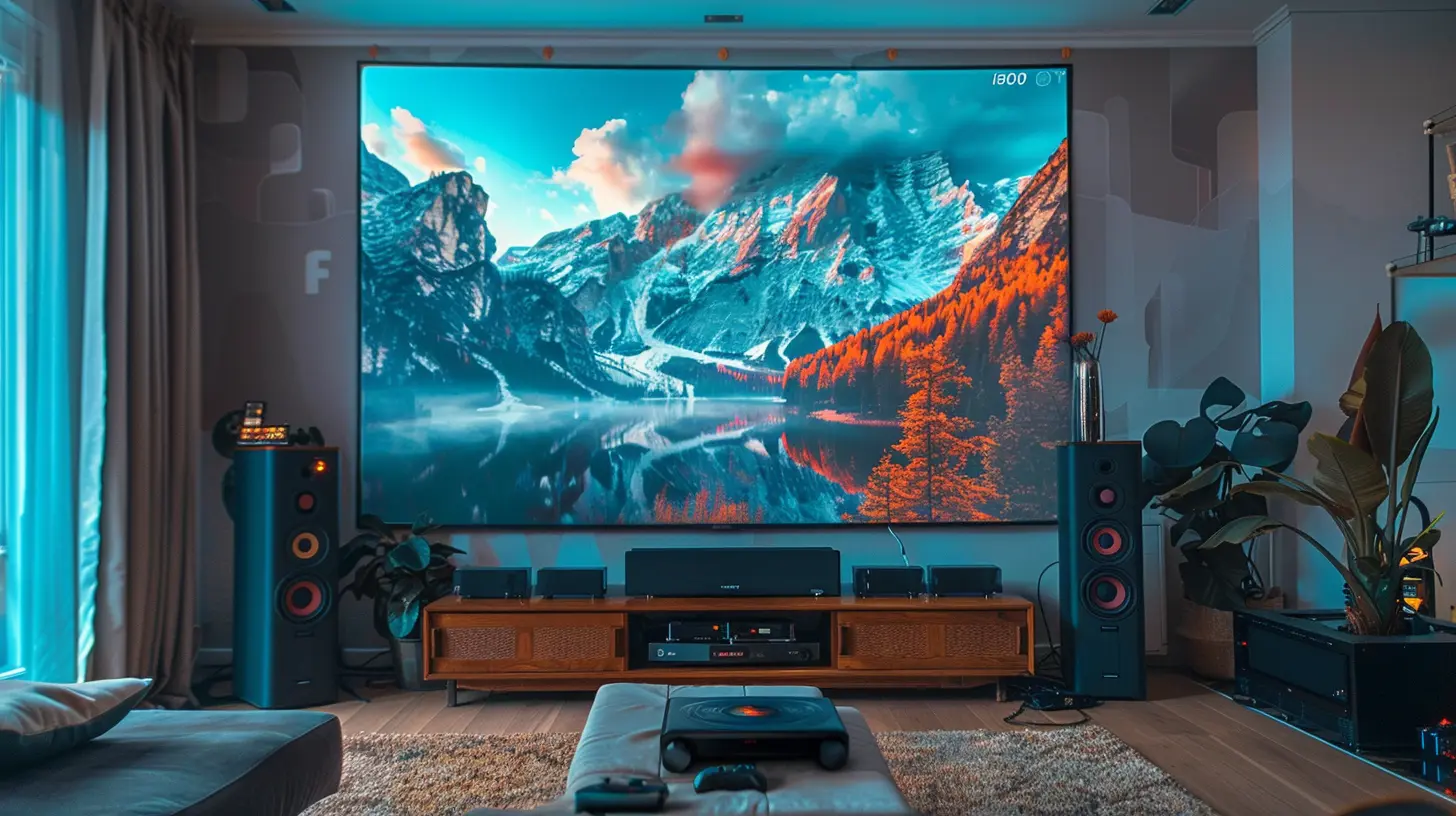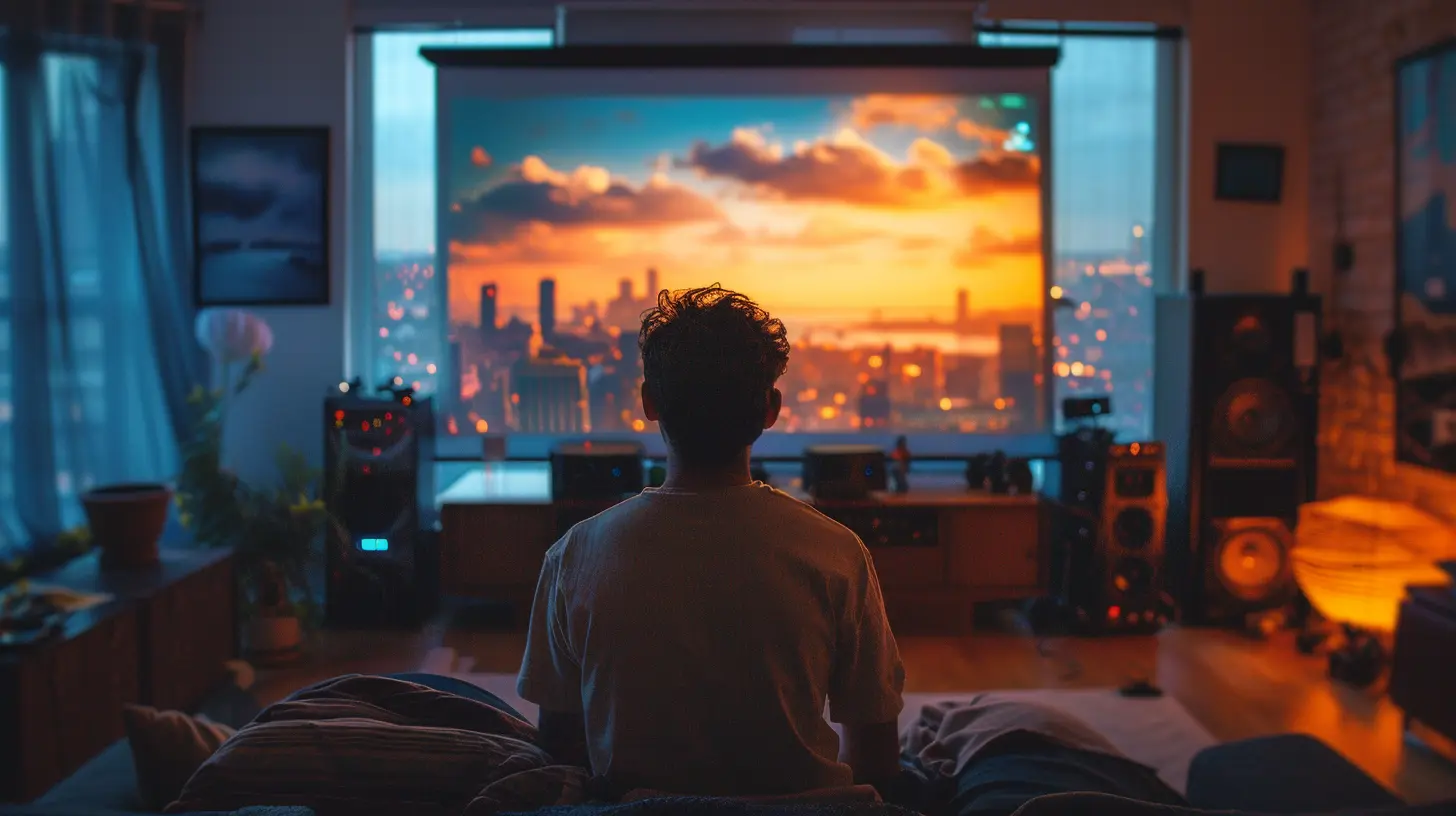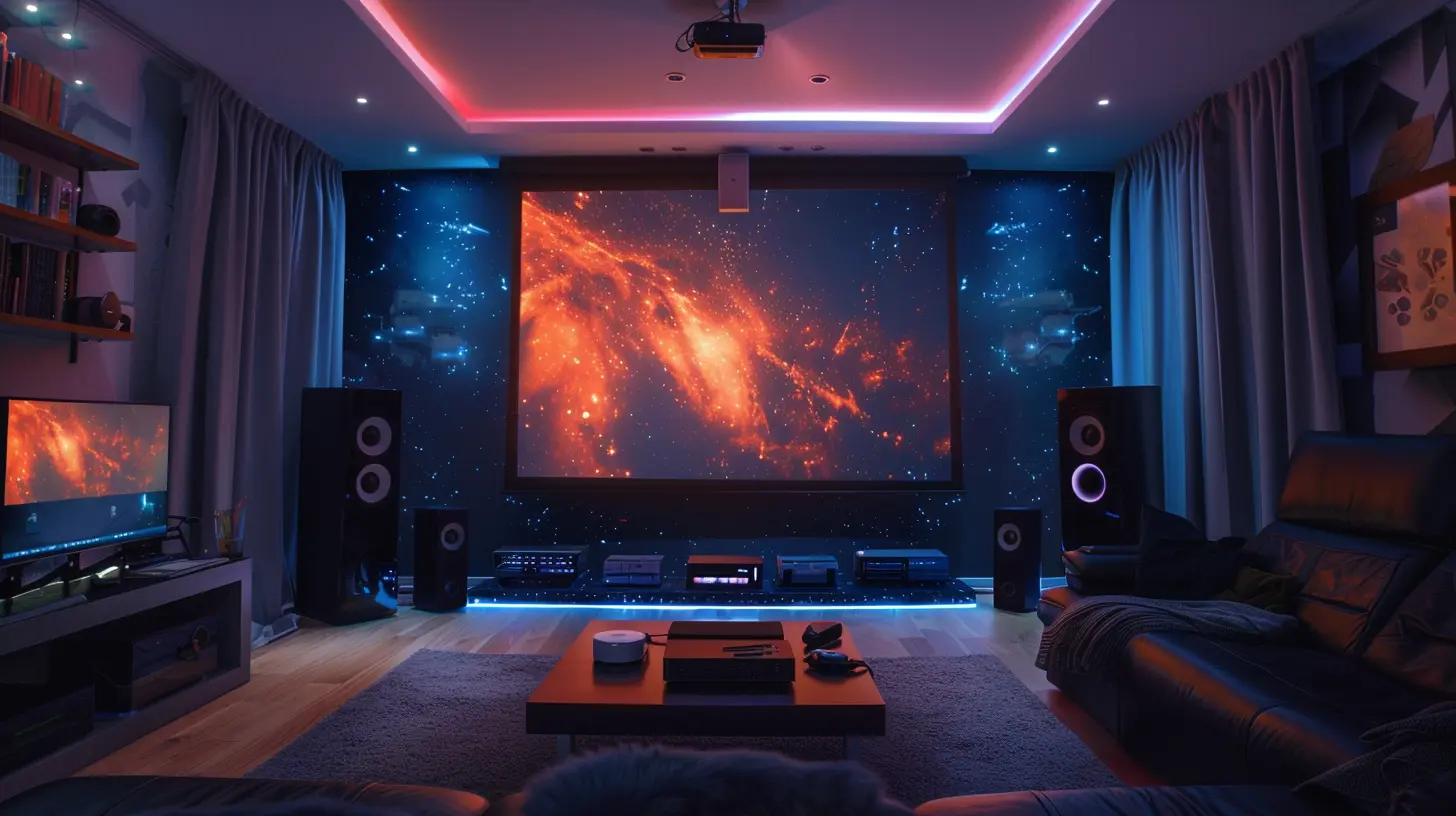Gaming Projectors Reviewed: Are They a Viable Monitor Alternative?
1 June 2025
When you think of gaming setups, the usual image is a hefty monitor, a souped-up PC, and maybe some RGB lighting to set the mood, right? But recently, gaming projectors have crept into the conversation. They're sleek, portable, and promise a larger-than-life gaming experience that your standard monitor just can't match. But let’s be honest—do they truly stack up against traditional monitors, or are they just a flashy gimmick?
In this article, we’re diving deep into gaming projectors. Are they the future of gaming displays or destined to sit in the shadow of monitors forever? Let’s figure it out.
What’s the Deal with Gaming Projectors Anyway?
Gaming projectors are essentially—you guessed it—projectors optimized for gaming. Unlike your office or home theater projectors, these bad boys boast features tailored for gamers: low input lag, high refresh rates, and cinematic resolutions designed to make your games pop. They promise an immersive experience that'd make even the best monitors jealous… or at least, that’s what the manufacturers claim.The Allure: Bigger Screen, Bigger World
The appeal is obvious: sheer size. Monitors are capped at a certain size—most gamers typically don’t go beyond 32 inches, right? Meanwhile, projectors can transform your wall into a 100-inch+ canvas of pixelated glory. Imagine playing The Legend of Zelda: Tears of the Kingdom with a screen that engulfs your entire room. It’s another level of immersion.But size isn’t everything. (Yeah, I know. Shocker.) Gaming projectors come with their own quirks, and not all of them are a gamer’s dream. More on that later.
Gaming Projector vs. Monitor: The Showdown
Let’s break it down step by step. After all, comparisons are the bread and butter of decision-making, right? So, who wins in the ultimate face-off for your gaming rig: projector or monitor?1. Visual Quality: Crispness vs. Grandeur
Monitors have a major edge here. With higher pixel density, they deliver sharper and more detailed visuals. If you’re a competitive gamer, this could be a deal-breaker. Imagine spotting an enemy sniper in Call of Duty: Warzone—on a monitor, no problem. On a projector? That might depend on your wall texture and projector resolution.However, gaming projectors, especially 4K ones, have stepped up their game. Modern units produce bright, vivid images with excellent contrast ratios. Still, they’re more forgiving for casual, immersive gaming rather than hardcore competitive play.
> Verdict: Monitors win for sharpness. But if you love that “big movie-feel” gaming experience, projectors might surprise you.
2. Input Lag and Refresh Rates: Reflexes on Trial
Let’s talk numbers. Competitive gaming thrives on low input lag and high refresh rates. Monitors, particularly those designed for gaming (think 144Hz or even 240Hz refresh rates), dominate this space. They ensure buttery-smooth gameplay and lightning-fast response times.Gaming projectors, traditionally, lagged behind (pun intended). But don't write them off just yet. Modern projectors have started incorporating gaming-specific modes which lower input lag to as little as 16ms, and some models even support a 120Hz refresh rate. Impressive? Yes. Comparable to monitors? Not quite.
> Verdict: Monitors are still the undisputed kings for fast-paced, competitive gaming.
3. Portability and Space: Who Fits Where?
Here’s where projectors shine. They’re portable and don’t hog desk space. No need for a dedicated monitor stand; you just need a blank wall or a screen to project onto. If you’re someone who likes to game in different rooms—or even outdoors on a chill evening—a projector gives you that flexibility.Monitors, on the other hand, are less forgiving. They’re stationary, often bulky, and demand prime desk real estate.
> Verdict: Projectors take this round—no contest.
4. Price: Budget vs. Luxury
It’s easy to assume projectors are bank-breaking, but hold up—there’s a bit more nuance. Gaming projectors span a wide range of prices. You’ll find decent options between $500–$1,500. The kicker? To get a really top-tier 4K gaming projector with low input lag, you’re looking at $2,000+. On top of that, you may need a quality projection screen and a dark room for the best experience.Monitors, meanwhile, offer more affordability. A solid 1080p 144Hz gaming monitor can be had for under $300, and even mid-range 4K monitors won’t drain your wallet as much as a premium projector.
> Verdict: Monitors are usually the more budget-friendly choice.
5. Setup and Convenience: Hassle-Free or Headache?
A monitor is plug-and-play. You connect your PC or console, and you’re good to go. Easy.Gaming projectors? Not so much. You’ll need to set up the projector, ensure the room lighting is ideal (forget gaming during the day if you don’t have blackout curtains), find the right distance from the wall, and tweak settings for the perfect image. Oh, and let’s not forget audio—projectors often have mediocre built-in speakers, so you’ll likely need an external sound system.
> Verdict: Monitors win here. Projectors? A bit high-maintenance.
Who Are Gaming Projectors Really For?
Projectors make sense for certain kinds of gamers. If you’re a casual gamer who loves immersive single-player experiences—think role-playing titles like The Witcher 3 or exploration games like No Man’s Sky—a gaming projector can elevate your experience to almost cinematic levels.But if you’re more into competitive titles like Valorant, League of Legends, or Fortnite, where every millisecond counts, stick with a monitor. You’ll thank yourself later when you’re landing headshots with pinpoint precision.
Key Considerations Before You Buy a Gaming Projector
Thinking about diving into the world of gaming projectors? Hold on. Here are some factors to chew on before pulling the trigger:- Room Lighting: Is your gaming spot super bright during the day? Projectors struggle in well-lit environments, so you’ll need blackout curtains or a dedicated dark room.
- Distance and Space: Projectors require adequate throw distance. Make sure your room has enough space for the size of the image you want.
- Longevity: Keep in mind, the projector lamp has a lifespan. Replacing it can cost a pretty penny, unlike monitors that don’t have this concern.
- Sound System: You might need external speakers since most projectors have subpar audio quality.
The Final Call: Is a Gaming Projector Worth It?
So, are gaming projectors a viable monitor alternative? The answer isn’t black and white—it’s all about your gaming style and priorities.If you crave portability, love immersive single-player games, and have the budget to splurge, then a gaming projector could become your new best friend. On the flip side, if competitive gaming, visual precision, and hassle-free setups are your thing, then sticking to a traditional gaming monitor is probably the smarter move.
Ultimately, it’s like choosing between a car and a motorcycle. Both will get you to your destination, but the ride will be wildly different depending on what you pick.
all images in this post were generated using AI tools
Category:
Hardware ReviewsAuthor:

Leif Coleman
Discussion
rate this article
3 comments
Kara McAlister
Great overview! I appreciate the comparison between gaming projectors and traditional monitors. It’d be helpful to include specific gaming scenarios where projectors excel or fall short, as that could guide potential buyers better.
June 9, 2025 at 2:45 AM

Leif Coleman
Thank you for your feedback! I'll definitely consider including specific gaming scenarios in future updates to better guide potential buyers.
Monique McDonough
Unlock new dimensions in gaming—project your experience to greatness!
June 8, 2025 at 3:02 PM

Leif Coleman
Thank you! Our review explores how gaming projectors can indeed elevate your gaming experience by offering immersive visuals and larger displays.
Solenne Wheeler
While gaming projectors offer immersive experiences, their latency and resolution limitations can hinder competitive gaming. Balancing space and performance is crucial for serious gamers.
June 6, 2025 at 3:10 AM

Leif Coleman
Thank you for your insights! You're right—while gaming projectors provide a unique experience, their limitations in latency and resolution can impact competitive play. Balancing space and performance is definitely key for gamers.



